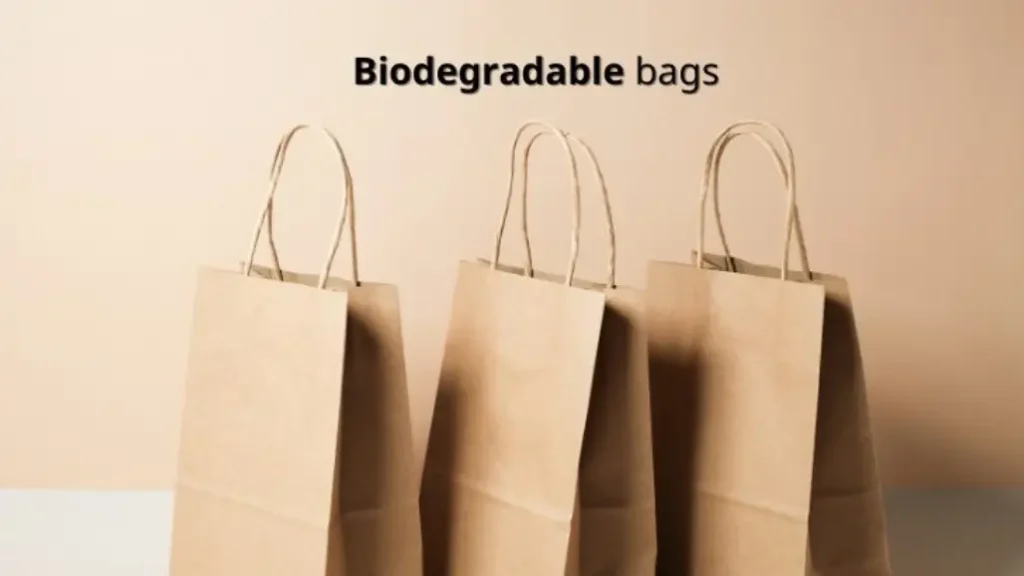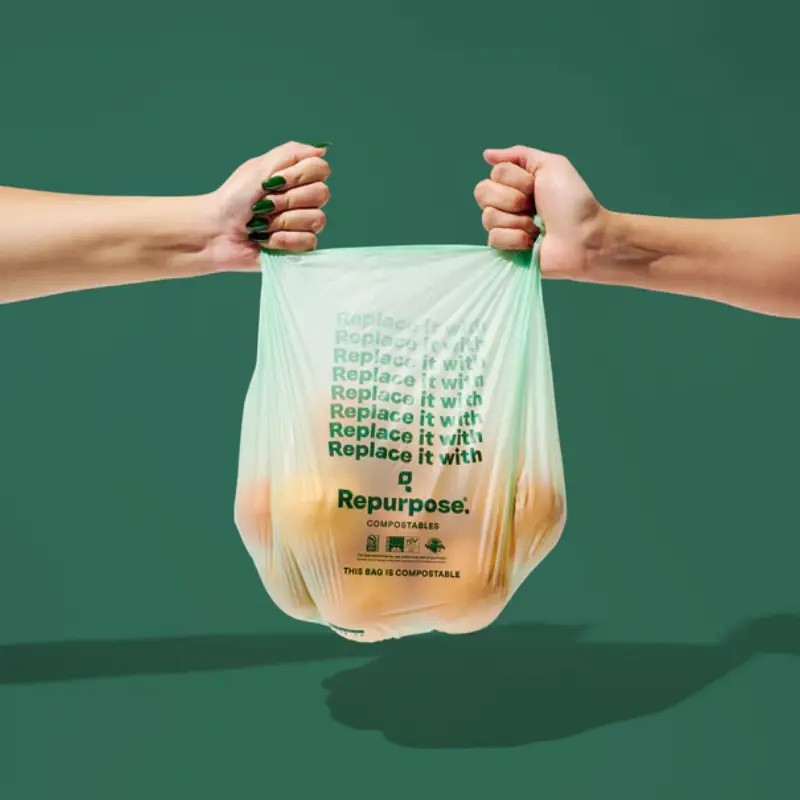With plastic pollution choking our oceans and landfills, finding sustainable alternatives is a pressing need. Enter biodegradable bags: a promising solution that offers a greener approach to our daily lives. This comprehensive guide will delve into the world of biodegradable bags, exploring their composition, benefits, types, and how they contribute to a more sustainable future.
Biodegradable bags are designed to decompose naturally within a relatively short timeframe, breaking down into harmless substances like water, carbon dioxide, and biomass. Unlike traditional plastic bags that persist in the environment for centuries, biodegradable alternatives offer a more eco-friendly way to carry groceries, dispose of waste, and meet various packaging needs. This guide will equip you with the knowledge to make informed choices and embrace a more sustainable lifestyle.
What Are Biodegradable Bags

Biodegradable bags are designed to decompose naturally in the environment, breaking down into harmless substances like water, carbon dioxide, and biomass.
Unlike traditional plastic bags derived from petroleum, which can persist in landfills for centuries, biodegradable bags offer a more eco-friendly alternative. They are typically made from renewable resources such as plant-based materials like corn starch, potato starch, or sugarcane.
These bags are created using microorganisms or enzymes that facilitate the breakdown process. This decomposition occurs under specific environmental conditions, such as exposure to moisture, heat, and oxygen. While the term “biodegradable” can be broad, it generally implies that the bag will break down significantly within a reasonable timeframe, minimizing its environmental impact.
How Do Biodegradable Bags Work
Biodegradable bags are designed to break down naturally over time, unlike traditional plastic bags made from petroleum. They are typically crafted from plant-based materials such as corn starch, sugarcane, or vegetable oils. These materials provide the foundation for the bag’s structure and functionality.
The “biodegradable” aspect comes into play due to the inherent nature of these plant-based materials. Microorganisms like bacteria and fungi can effectively break down these materials, converting them into simpler substances such as carbon dioxide, water, and biomass. This natural decomposition process occurs under specific environmental conditions, such as within a compost pile or in specialized composting facilities.
What Are Biodegradable Bags Made From
Biodegradable bags are primarily crafted from renewable resources, offering a sustainable alternative to traditional petroleum-based plastics. These resources often include plant-based materials such as corn starch, potato starch, sugarcane, and other plant-derived substances. These materials are processed to create bioplastics, which serve as the primary building block for these eco-friendly bags.
Biodegradable bags are made of polymers and other substances. These polymers are derived from renewable sources like plants, allowing for a more sustainable production process compared to traditional plastics. The “other substances” often include additives that enhance the bag’s biodegradability, such as enzymes or microorganisms. These additives facilitate the breakdown process by interacting with the surrounding environment, accelerating the decomposition of the bag into harmless byproducts.
The specific composition of biodegradable bags can vary depending on the manufacturer and the intended use of the bag. Some common materials used in their production include polylactic acid (PLA), a bioplastic derived from corn starch, and polyhydroxyalkanoates (PHAs), a class of biodegradable polymers produced by bacteria. These materials offer a range of properties, such as strength, flexibility, and compostability, making them suitable for various applications.
What Are Biodegradable Plastic Bags Made Of
Biodegradable plastic bags are primarily made from renewable resources, such as:
Plant-based materials: These include corn starch, potato starch, sugarcane, and other plant-derived substances. These materials are processed to create bioplastics, which serve as the primary building block for these eco-friendly bags.
Biopolymers: These are polymers derived from biological sources, such as microorganisms or plants. Examples include:
- Polylactic acid (PLA): A bioplastic produced from corn starch.
- Polyhydroxyalkanoates (PHAs): A class of biodegradable polymers produced by bacteria.
These materials, along with additives that enhance biodegradability (like enzymes or microorganisms), contribute to the composition of biodegradable plastic bags.
Biodegradable plastic bags offer a more sustainable alternative to traditional petroleum-based plastics by utilizing renewable resources and promoting natural decomposition.
What Are Biodegradable Nursery Bags Made Of
Biodegradable nursery bags are typically made from a variety of eco-friendly materials, including:
- Bioplastics: These are plastics derived from renewable resources like corn starch, sugarcane, or other plant-based materials.
- Natural fibers: Materials like jute, hemp, and coconut coir can be woven or spun into biodegradable bags.
- Recycled paper:
- Biodegradable polymers: These are polymers derived from biological sources, such as microorganisms or plants.
These materials offer a sustainable alternative to traditional plastic nursery bags, as they break down naturally in the environment, minimizing their environmental impact.
Key Takeaway: Biodegradable nursery bags are designed with sustainability in mind, utilizing renewable resources and promoting a greener approach to plant cultivation.
What Are Biodegradable Tea Bags Made Of
Biodegradable tea bags are made from a variety of materials, but they all share a focus on sustainability and environmental friendliness. Here are some common materials used:
- Plant-based materials:
- Abaca: A strong, natural fiber derived from the banana plant.
- Corn starch: Used to create biodegradable plastics like PLA (polylactic acid).
- Cellulose: Derived from sustainably grown trees.
- Bamboo: A rapidly renewable resource that can be processed into fibers.
- Bioplastics:
- PLA (Polylactic acid): A bioplastic made from plant starches, often corn.
These materials are chosen for their ability to decompose naturally in suitable environments, minimizing their environmental impact.
Important Note: While many tea bags are labeled as “biodegradable,” it’s crucial to check for specific certifications like “compostable” to ensure they can break down completely in home compost systems.
By choosing biodegradable tea bags, consumers can make a small but significant contribution to reducing plastic waste and promoting a more sustainable approach to enjoying their daily cup of tea.
What Are Biodegradable Trash Bags Made Of
Biodegradable trash bags are typically made from plant-based materials, such as:
- Corn starch: A common source for producing bioplastics like PLA (polylactic acid).
- Potato starch: Another plant-based material used in the production of biodegradable plastics.
- Sugarcane: Can be processed to create bioplastics for use in trash bags.
- Other plant-derived substances: Various plant materials can be used to create the polymers that form biodegradable trash bags.
These plant-based materials are processed to create bioplastics, which are then used to manufacture the bags.
Key Takeaway: Biodegradable trash bags offer a more environmentally friendly alternative to traditional plastic bags by utilizing renewable resources and breaking down more easily in suitable environments.
Important Note: Always check the specific certifications (like “compostable”) on the packaging to ensure the bags are suitable for your intended disposal method (e.g., home composting, commercial composting).
What is the Difference Between Biodegradable and Compostable Bags

Biodegradable:
- Definition: This term simply means that a material can be broken down by microorganisms (like bacteria and fungi) into natural substances.
- Breakdown Time: Can vary greatly, from a few months to many years.
- Breakdown Products: May include harmless substances like water, carbon dioxide, and biomass, but can also sometimes leave behind microplastics or other residues.
- Environmental Impact: Can have a positive impact, but the extent depends on the specific material and how quickly it breaks down. Some “biodegradable” products may not decompose completely or may release harmful substances into the environment.
Compostable:
- Definition: This term has a stricter definition. It means a material can break down into natural elements (like water, carbon dioxide, and biomass) within a specific timeframe (usually 90 days) in a controlled composting environment.
- Breakdown Time: Relatively quick and predictable.
- Breakdown Products: Must be completely harmless and turn into nutrient-rich soil.
- Environmental Impact: Generally considered more environmentally friendly than simply “biodegradable” because it ensures complete breakdown and minimizes negative impacts.
Key Differences between biodegradable and compostable bags :
- Compostable is a more specific and stringent term than biodegradable.
- Compostable materials are designed to break down completely in a controlled composting environment, while biodegradable materials may not.
- Compostable materials are generally considered more environmentally friendly.
Sum up:
- All compostable materials are biodegradable, but not all biodegradable materials are compostable.
Always check for certifications: Look for certifications like “Certified Compostable” from reputable organizations like the Biodegradable Products Institute (BPI) to ensure a product truly meets the standards for composting.
How to Tell if a Plastic Bag is Biodegradable
The most reliable way to tell if a plastic bag is biodegradable is to look for specific certifications and labels.
- Look for Certifications: Reputable certifications, such as the “OK Compost” and “Compostable” logos, indicate that the bag has been independently tested and verified to meet specific standards for biodegradability and compostability in industrial composting facilities. These certifications often include a code followed by a number, which helps to ensure traceability.
- Check for Clear Labeling: Look for clear and unambiguous labeling on the bag itself. Phrases like “biodegradable,” “compostable,” or “plant-based” should be prominently displayed. Be wary of vague or misleading terms that may not accurately reflect the bag’s true biodegradability.
- Consider the Source: Purchase biodegradable bags from reputable retailers and manufacturers known for their commitment to sustainability. This can help to ensure that the products you are buying are genuine and meet the claimed standards for biodegradability.
Remember, while certifications and labels provide valuable information, it’s always a good practice to research the specific brand and product to confirm its biodegradability and ensure proper disposal.
Conclusion
In conclusion, biodegradable bags offer a sustainable alternative to traditional plastic bags, minimizing environmental impact and promoting a greener future. By choosing biodegradable options, you can contribute to a healthier planet for generations to come.
Ready to make the switch? Contact us today to explore our wide range of high-quality wholesale biodegradable bags. Our team is dedicated to providing you with eco-friendly solutions that meet your specific needs. Let’s work together to create a more sustainable tomorrow.
